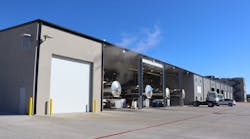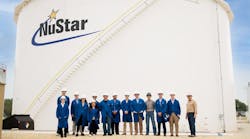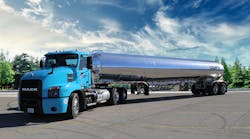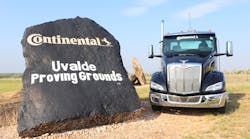It's June and a new hurricane season is underway for those who live along the East and Gulf Coast areas of the United States. Some meteorologists are predicting an above-average hurricane season, but that is all conjecture.
What we do know with certainty is that a hurricane could strike anywhere from Bangor, Maine, to Brownsville, Texas. We also know that even the smallest hurricane can do a tremendous amount of damage to a very large area and can significantly disrupt people’s lives.
A good example was Hurricane Sandy, which wasn’t even a hurricane when it made landfall in the New York/New Jersey area last fall on October 29, 2012. More than 100 people died, thousands of homes were destroyed, and thousands more were flooded. The lights went out for more than eight million homes across 17 states. Recovery is still underway and will be for years to come.
Many essentials—fuel and food among them—were in short supply for weeks after the storm. Fuel shortages were especially acute because approximately 80% of the region’s fuel supply was taken off line by the storm. Shortages lasted for weeks.
With a new hurricane season starting and with the memories of Sandy still very fresh, state and local governments throughout the Atlantic Coast and Gulf Coast regions have been holding preparedness drills and making updates to their storm plans.
This is also a good time for the fuel haulers in the region to update their hurricane response plans. Disaster planning and preparation isn’t just for hurricanes. Other areas of the country face threats from floods, tornadoes, blizzards, and other severe weather events.
We talked with several of the fuel haulers and suppliers that helped get fuel back into the New York and New Jersey area after Sandy. These are petroleum marketers and haulers that specialize in responding to weather events and other natural disasters.
They make it clear that fuel haulers play a critical role in storm recovery, but the companies must be well prepared. In addition, fuel haulers should conduct regular drills, just as they would for emergency response scenarios. The key is practice, practice, practice.
A well thought out plan must be in place, according to Ryan Mossman, vice-president and general manager of fuel services at FuelQuest. “This is critical for marketers, transporters, and others in the fuel distribution business, says Mossman, whose company manages distribution of more than 21 billion gallons of fuel annually. “These companies have an important role to play in storm recovery, and they need to be up and running as soon as possible after the storm is over.”
Planning for a fuel hauler starts with identifying a reliable fuel supply, and that starts with building good contractual relationships, according to Mossman. The plan should contain a timeline for activating certain steps in the storm prep process once a hurricane forms and begins moving toward the coast.
Storage tanks at bulk plants, c-stores, and other locations may need to be topped off. If at all possible, fuel haulers need a secure location out of the path of the storm to park transports and tankwagons. Key drivers and other employees must be selected and trained. Routes from fuel terminals to distribution points should be pre-identified.
As with all emergency response plans, it is important to build good relationships with emergency responders. Good communication is critical, and contract lists need regular updating.
Key drivers and other employees must be selected and trained. Some of the fuel haulers that are regular participants in storm recovery efforts have teams that can be dispatched to a disaster area on short notice. For instance, Sun Coast Resources Inc calls their teams Special Operations. Atlas Oil Company designates their team members as SEALS.
“These are the people who are the first to an emergency,” says Kyle Lehne, Sun Coast vice-president and director of emergency response. “We got involved with emergency refueling in 2004 during several Florida hurricanes, and we’ve been doing it ever since. We have close to 100 vehicles allocated to storm response.
“Sandy brought plenty of challenges. We had to move fuel from as far away as San Antonio and Dallas, Texas. Driver security was an issue, because people were desperate for fuel. Landmarks were gone, which made it difficult to find delivery locations.”
Sun Coast sent equipment in three days ahead of Sandy’s landfall. One of the nation’s largest emergency fuel service providers, the company specializes in generator and on-site fueling during times of peril. It operates more than 1,000 trucks, many of them refuelers that can serve as mobile fueling stations. Sun Coast also has a Mobile Field Command Center and a fleet of RVs for temporary housing for use during disaster response activities.
Atlas Oil sent 65 trucks—transports and tankwagons—to the New York/New Jersey area. Bob Kenyon, Atlas Oil executive vice-president, sales and business development, says the situation was desperate, with major disruptions to the fuel distribution infrastructure.
However, the SEALS teams were ready for it. “They are very well trained,” Kenyon says. “They run regular table top exercises on various types of events and were prepared for the worst. They brought their own RVs to stay in and every team member had a deployment kit. They brought everything they needed, including spare parts for the trucks.”
These companies made a difference because they were prepared well in advance of the storm.








